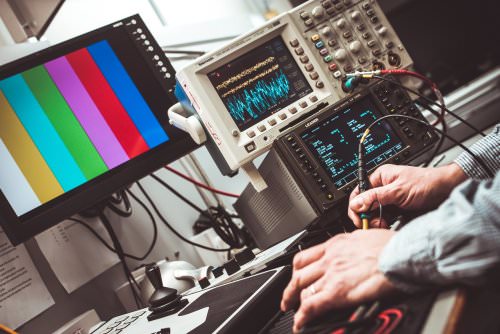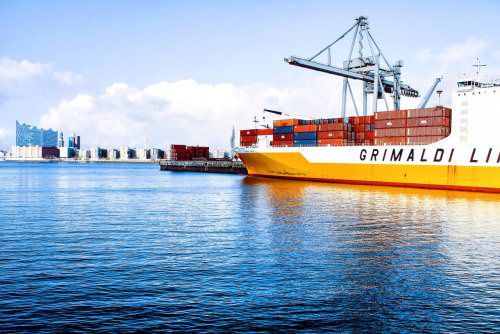
One of the most frequently asked questions we get at Premium USB is why do the prices of USBs change so often? Anyone who’s bought their share of flash drives over the year will have noticed that their prices seem to fluctuate often. It can be frustrating, but rest assured that there is a very good reason for that. And also know this: It’s not our fault!
At Premium USB we do everything we can to keep our flash drives reasonably priced and accessible for any interested organizations to benefit from them. We’re able to price them competitively and fairly by assembling our flash drives in-house in the U.S. Unfortunately we’re not able to do EVERYTHING in-house. All flash drives require a valuable component that can only be acquired overseas, and it’s that one part that’s the key to solving the “why do USB prices change so much?” puzzle.
Hot Commodity
The most critical component inside USBs are their memory chips. Flash memory uses NAND chips, which are non-volatile. That means they don’t need to be backed up with a battery or capacitor to maintain their contents. Other types of memory like DRAM need power to preserve their storage capacities, which makes them less reliable compared to the loss-less NAND chips. These special chips are made in fabrication plants called “fabs”. Only a handful of fabs exist, producing the world’s supply of NAND chips in factories based in China, Taiwan, Singapore, Japan, and South Korea.

NAND chips don’t just power USB flash drives: They are a critical part of most modern electronics. Flash memory is used in desktop computers, mobile phones, MP3 players, laptops, medical devices, and many other essential pieces of technology. Demand for these chips is high, and only a few fabs are outfitted to produce them.

Crack open any economic textbook and you can see where we’re going with all this. What do you call an item that is highly in demand but subject to fluctuations in supply and changes in the marketplace? A commodity. NAND chips ARE commodities, just like gold, and are traded in a similar fashion. And as anyone who has dealt with commodities like oil, gold, tobacco, or copper can tell you, the value of a commodity is always shifting. This is the main reason why USB prices can vary so wildly over time: The source of their storage power is a hot commodity!
Serious Demand

Think about how ubiquitous cell phones are in our culture. Each and every phone out uses flash memory. Every time Samsung, Sony, HTC, LG, or any other cell phone manufacturer produces a new line of phones, they have to order large runs of these commodities to get them ready for the marketplace. So while there may be “slow” months where the fabs aren’t beseiged with large memory orders, there are going to be “hot” times of the year when production will be backed up with demand for more chips.
This shifting demand makes a big difference on the value of NAND as a commodity. When the fabs are working in overdrive to meet demand (esp. during busy holiday seasons), the commodities’ value will skyrocket to reflect how hard it is to place orders for new chips. On slower months as the orders trickle in, prices will drop to reflect how much more available they are now.
Production Problems
When it comes to commodity value, supply goes hand in hand with demand. While large orders and busy seasons can drive up the price of flash memory, other unforeseen situations can arise to cause production problems. One of the biggest potential problems is the environment.

A case in point is Japan. In 2011 Japan was rocked by earthquakes and tsunamis. This massive environmental damage caused them to shut down production on many of their factories, including their NAND fabs. It wasn’t just a case of dealing with the health risks and physical hazards that came with the quake and tsunami: Some of the factories were heavily damaged! And because most other fabs are usually working at capacity to fill orders, when the Japanese fabs briefly went down other fabs weren’t ready or able to pick up the slack in the supply chain, causing NAND chips to becoming scarcer than they normally are.
Environmental damages can put a fab out of commission for a few days, sometimes even a week. On paper that may not seem like a lot of time, but for the marketplace those days of inactivity translate into considerable changes in the value of NANDs. And it’s not just Mother Nature that fabs need to be worried about- Malfunctioning equipment, power outages, factory accidents, strikes, and political unrest can also cause major delays in chip production.
Shipping
Another factor in the changing values of flash memory is the fact that they are an overseas commodity. Because they have to be shipped to us, it adds another element of risk or potential for delay that can affect their value. Storms can prevent the shipments from being made and lead to grounded flights and container ships languishing in harbors. Shipments can get lost or even stolen en route, which can be particularly catastrophic if it happens to a large volume order for a company like Apple. They can also be affected by seasonal demand, especially during the holidays when orders for high-priced electronics skyrocket and the shipping industry is pushed to its limits to meet demand in time.

Happy New Year
Do you know when flash memory tends to be most expensive? February. It’s the month of the Chinese New Year, and during that time production in Chinese fabs shut down for 2 TO 3 WEEKS. Because of this holiday delay in production, demand for NAND chips sees a sharp increase. And as we’ve seen with other commodities: When demand increases, the price of the commodity is sure to follow suit.

In A Nutshell
The next time you notice a price change when you buy flash drives, remember that the memory chips inside them are like gold. Their value appreciates and depreciates depending on supply and demand. If you’re an organization looking to purchase a large supply of drives at the right time, keep these pointers in mind:
- Get them before the holidays.
- Place your orders before February, when production halts due to the Chinese New Year.
- Pay attention to big companies like Apple and Sony. If they’re about to release a new electronics product, demand for chips is about to spike. Get your USB orders in before the big boys get theirs in.
Got more questions about how memory chips work as a commodity? Get in touch with Premium USB for the answers you need.
